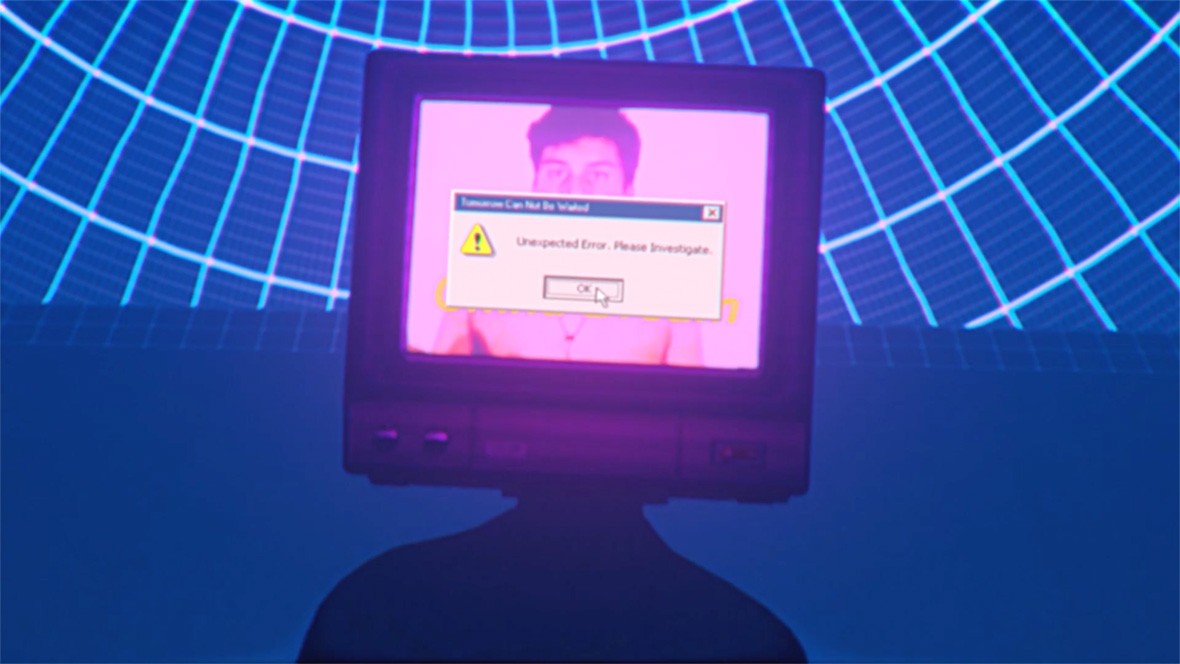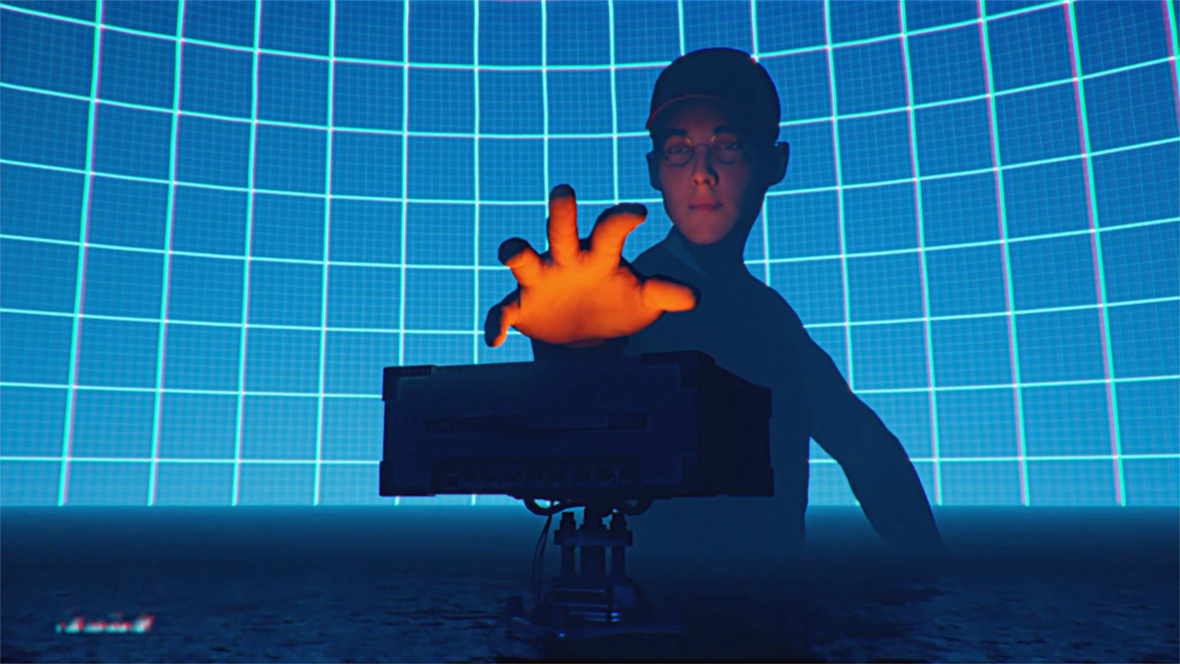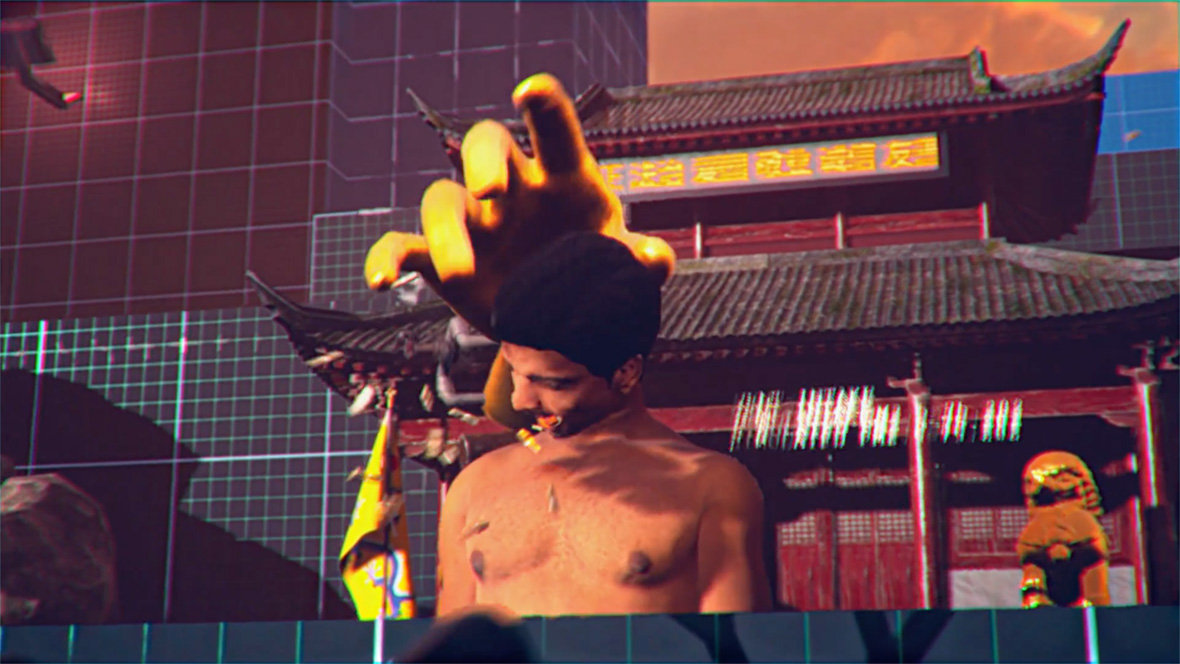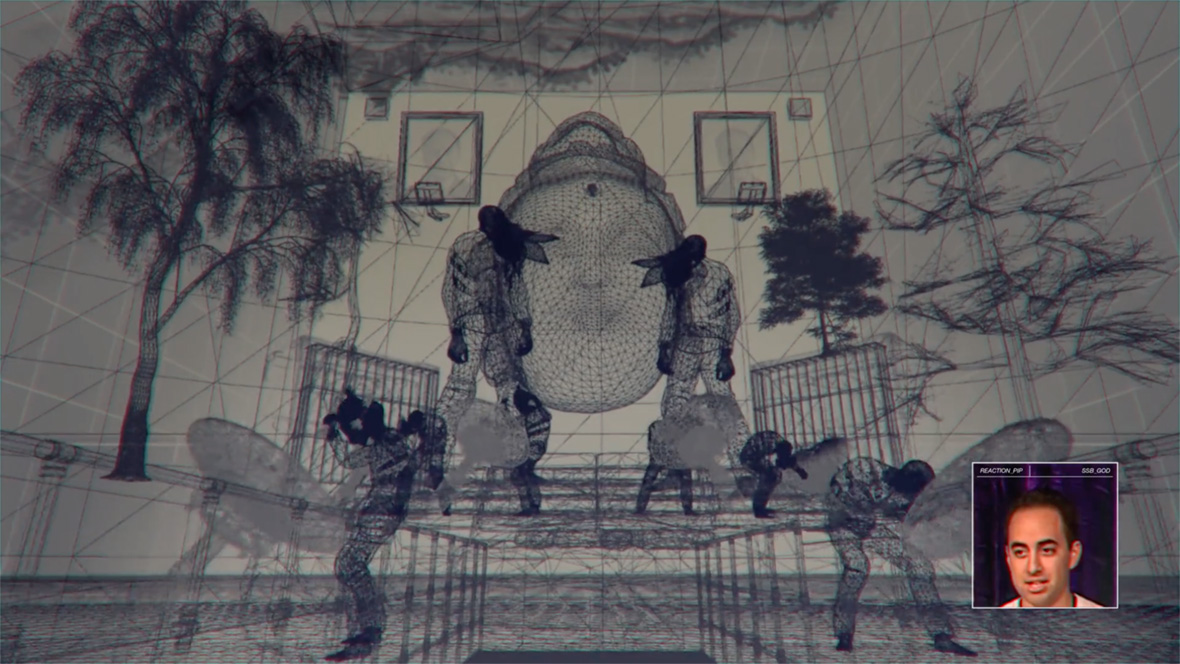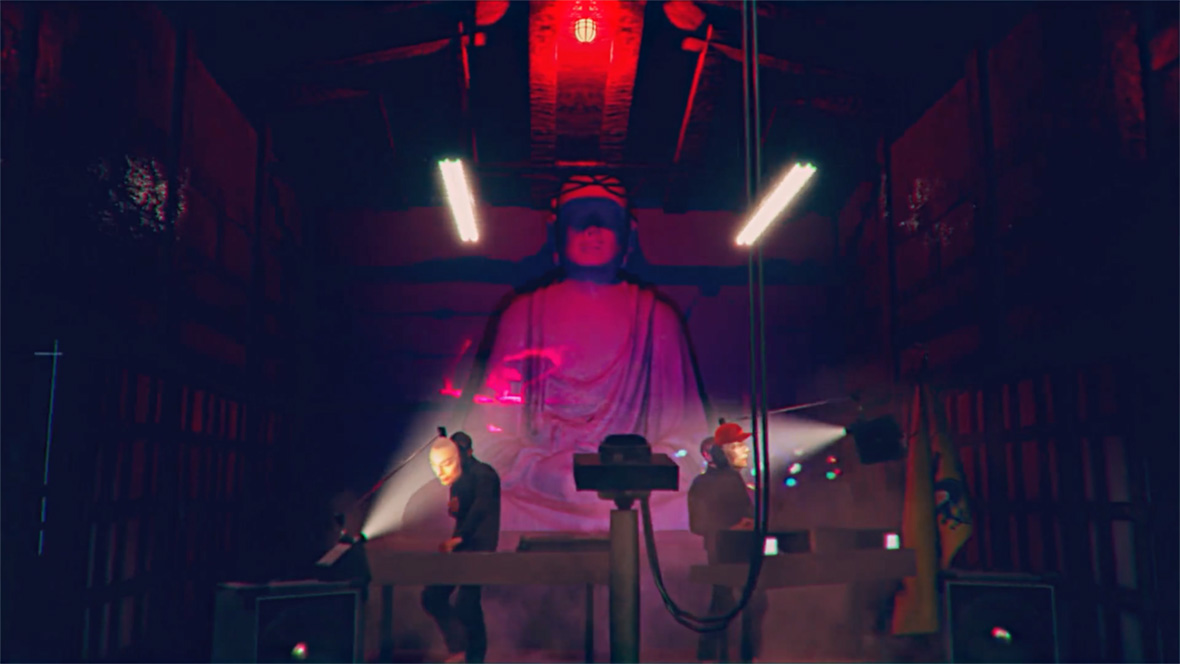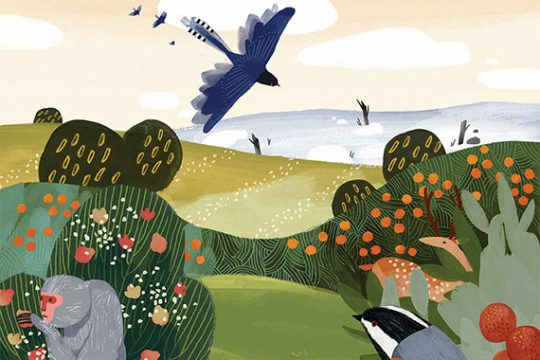无法观看?前往腾讯视频
A man begins speaking in Hindi as the video begins. “This footage looks real, isn’t it? You see people . . . are easy to believe what perceived by their senses [sic],” read the strange subtitles.“Because it’s easy, right? You see . . . when you start to question reality, you will start to feel like life is a video game, and you can shut down this machine anytime. So the final question is . . . do you have fun?”
In surreal fashion, the subtitles are completely unrelated to the actual audio, which in fact says, “Rooms are closed for an hour, did you know? That’s why America has technology that, when the room is left open for an hour, someone can record.” It is the first of many bizarre easter eggs for the viewer in this endlessly watchable, multilayered music video.
MV 开场,一个印度男人对着摄影机讲着奇怪的话,字幕上写着: “这段影像是真实存在的,对吧? 你看……人们都愿意相信自己生理上的直观感知。因为这是轻而易举的事,对不对?但……当你开始质疑现实,你会开始发现,生活就像是打游戏,你可以随时关掉游戏机。但最终的问题在于……这个游戏,你玩得开心吗?”
然而,字幕与印度男人的话没有任何关联,他实际上是在说:“你知道那些房间已经关闭了一个小时吗? 在美国有一种说法,当房门敞开一个小时后,你才能进行拍摄”。这种 “词不达字幕意” 的超现实主义表达方式只是 MV 许多彩蛋中的一个,而 MV 中多层次的寓意与内容,值得你反复观看。
“Tomorrow Can Not Be Waited” [sic] is the lead single to Howie Lee’s upcoming full-length studio album, due out this fall. It’s a bold introduction to an album: like much of Lee’s recent work, the four-minute track forgoes any kind of standard song structure in favor of a series of quick thematic shifts, never to be revisited, that push the narrative along.
The track’s peculiar title is a reference to a story in the Daoist classic known as the Zhuangzi. In it, a madman named Jie Yu comes to Confucius’s door and asks why the sage has come to the state of Chu, a declining power. “The future cannot be waited for, the past cannot be chased,” the madman says enigmatically. In the larger context of the teachings of the Dao, these words are profound, invoking the idea that worry comes from having one’s mind in the future, and regret comes from having one’s mind in the past. We can only live in the moment and take things as they come.
《明日不可待》是 Howie Lee 即将于今秋发行的全长录音室专辑中的主打曲目。其大胆张扬的风格为专辑代言:四分钟的歌曲长度,摒弃任何音乐的结构准则,取而代之的是一系列快速的主题切换,不会流连忘返,持续推进着故事。
歌名取自道教经典《庄子》里的一个故事。楚国狂人接舆在孔子车前走过时,问他为什么来楚国这个衰落的国家,狂人深不可测地回答道:“来世不可待,往世不可追也”。在道教教义中,忧虑来自人对未来的欲望,悔恨来自对过去的追思。我们只能生活在当下,既来之,则安之。
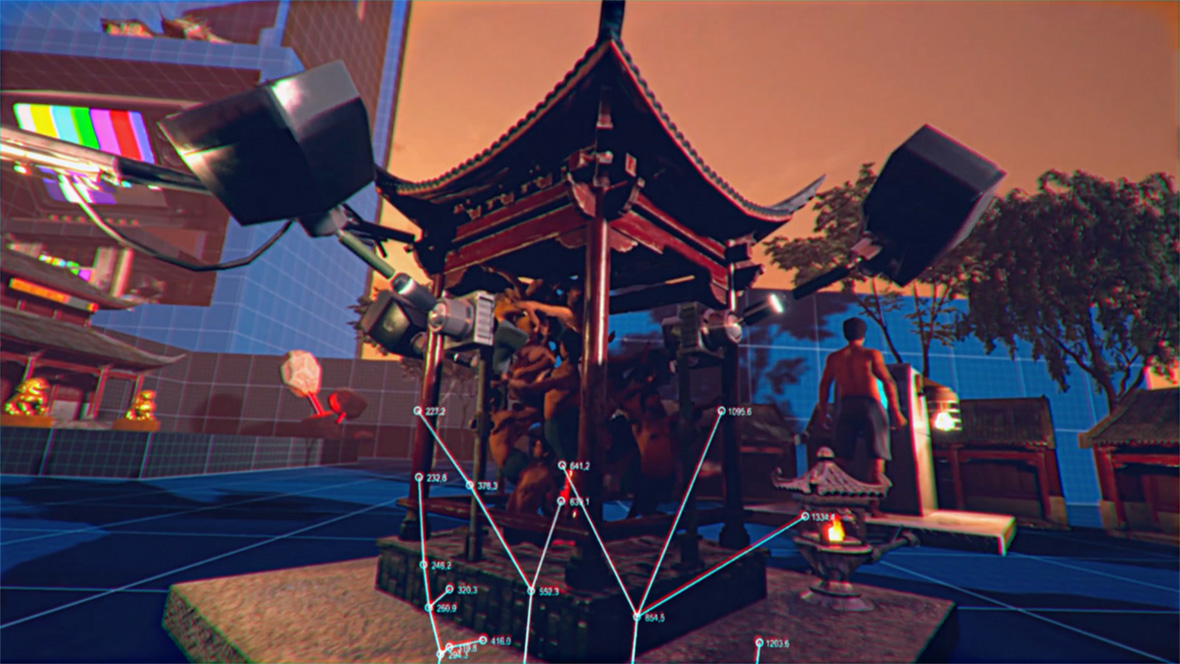

The idea of embracing the present feels apt for a track that asks listeners to revel in its unpredictability. Although the composition jumps from one dramatic moment to the next, it still seems to sit comfortably in whatever is its present. Yet existing in the now doesn’t mean that the now is something harmonious. A cheerful intro, recalling the awakening of a new day, soon crescendos into plucked strings that might sound pleasantly anticipatory were it not for the dark bassline looming beneath. The track is chock-full of such moments: a little good in the evil sounds, a little evil in the good ones.
The video released along with the track is rich with evocative imagery, emphasizing the cinematic nature of the song. Created by Teom Chen of Taiwan, it’s a fascinating contemplation of the constructed or conventional nature of any society, using the imagery of video games and virtual reality to question whether human beings are indeed free. “I believe that humans don’t have free will,” Lee remarks. “People are products of their social environment.”
这种拥抱当下的态度,很符合歌曲不断切换主题的概念,带听众领略不可预知的盛宴。尽管编曲方式接二连三地变换,但仿佛达到了某种随心所欲的自在境界。然而,活在当下也并不能意味着畅然自得。悦耳的序曲响起,仿佛唤起人新的一天;但很快,旋律随着传统弦乐的拨动而迅速上扬,而深沉肥厚的贝斯线条却让愉快的旋律也变得黑暗起来:邪恶与美好被交织混杂在一起。
与歌曲一同出现在大众视线范围内的,还有台湾视频制作人 Teom Chen, 他在充满令人回味的图像中,凸显出歌曲本身极富画面感的个性。视频中,Teom 用电子游戏般的画面与虚拟现实的影像,对人类的真实存在提出质疑,同时体现出他对社会构建与传统本质的深思。Howie Lee 提到:“我觉得人类是没有自由意志的,人只是社会环境的产物。”
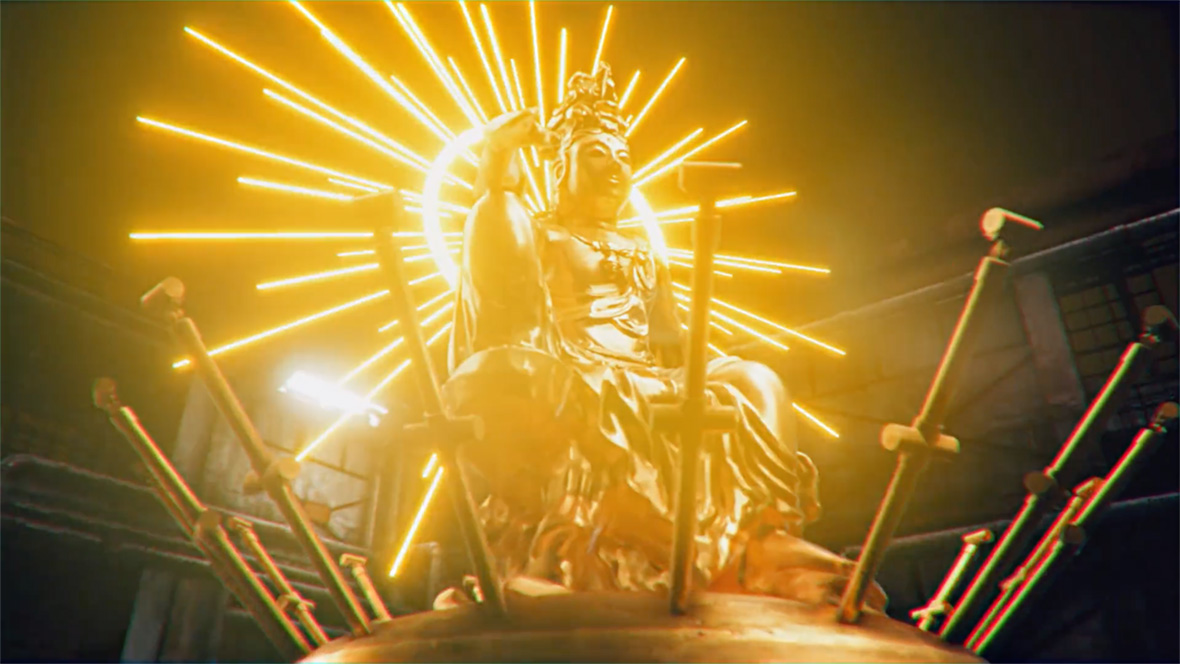
Riffing on this idea, the video opens with what appears to be a standard fighting video game, with a pair of hands holding a gaming controller in the corner. But with a flick of a button, the whole world shakes, revealing that this pair of hands controls not just the characters but their whole environment as well. The figure on screen, his sword in mid-swing, disappears in a fizzle and is replaced by a shirtless Indian man.
A moment later, the frame zooms out to reveal that this man, and the hands on the video game controller, are on a screen, opposite the same man in a set of VR goggles. He is not holding the controller, which suggests that someone else is controlling what he sees. All this takes place in a small room floating in an ocean in another video-game world. As the frame floats away, the scene changes and settles on a screen showing a live-action version of the same man, now seemingly fully in control of himself, laughing maniacally. To create this surreal sequence, Chen gathered a series of images of humans, and fed them to an AI program. After learning how to distinguish humans from other objects, the AI program randomly found and selected the live-action footage of the Indian man. Chen then modeled his own rendering of the recurring character after this footage.
依照这个想法,视频以经典的格斗游戏画面开场,你会在角落里发现某人的双手,它们正操纵着游戏手柄 —— 但只要轻轻一按,整个世界就开始摇晃,这双手不仅控制着游戏人物,也在控制整个环境。屏幕上的角色挥舞着手中的剑,突然间他嘶得一声消失在屏幕里,恍然变成了那个光着膀子的印度男人。
过了一会儿,镜头向后拉远,男人和控制游戏手柄的双手都出现在屏幕上。相同的男人坐在屏幕前,头戴一副 VR 眼镜,手中的游戏手柄不再出现,意味着有人正在控制他眼前的画面。所有这一切都发生在汪洋大海中漂浮的房间里,存在于另一个游戏世界中。随着这个画面再一次漂远,场景再度发生变化,切换成大屏幕,播放着印度男人的真人实拍录像。而现在,他看上去像是一切尽在自己掌控之中,正疯狂地大笑。
为了创造这些超现实的系列画面,Teom 收集了许多人类图像,将它们输入 AI人工智能。在学会了如何辨别人物行为过后,人工智能系统随机搜索并选择了这个印度男人的真人录像,再经过 Teom 的渲染与建模,这个角色用另一种方式重新出现在影像中。
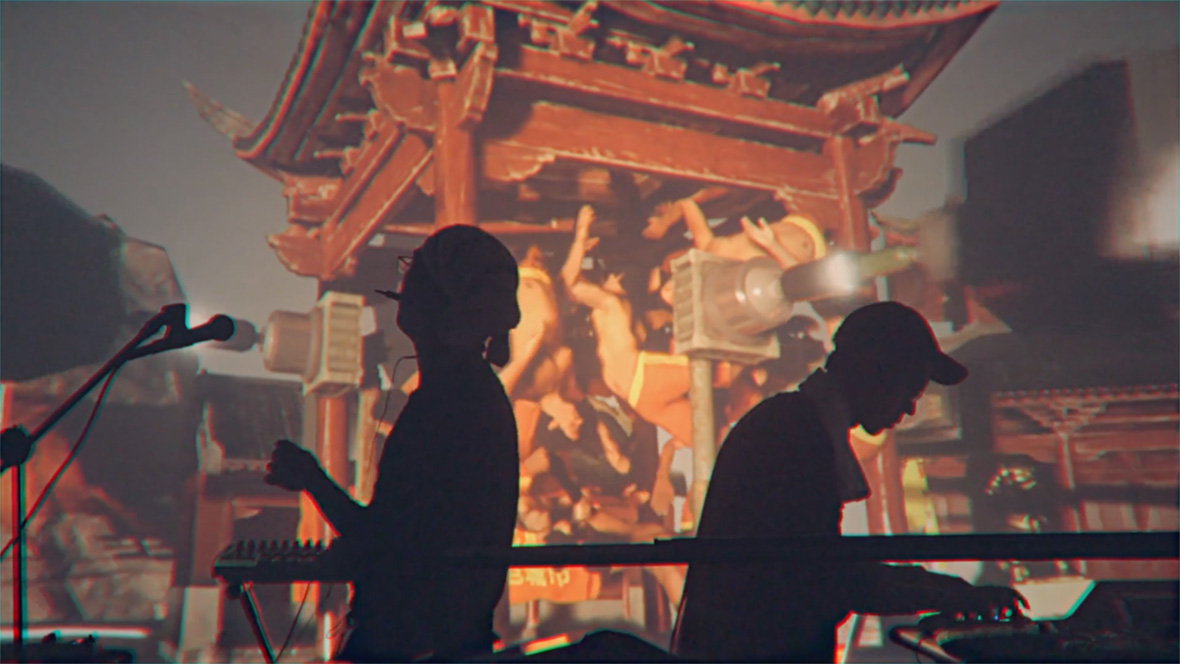
The video also cleverly interpolates footage from one of Lee and Chen’s joint live shows. In these performances, the two stand opposite each other, Lee performing the music with an array of MIDI controllers laid out around him, and Chen using custom controllers and a laptop to navigate and manipulate the world he’s created. Events in the virtual realm can be triggered not just by Chen but also by Lee’s instruments, syncing the music and the visuals even more closely. As with the Indian protagonist, both filmed and virtually rendered versions of the two performers appear throughout the video. The duo thus appears simply as additional characters in the larger story. “The virtual and the real are on a converging path,” Chen says. “When mind and matter are one, the virtual is the real, the real is a dream.”
短片还巧妙地插入了 Howie 和 Teom 一次联袂表演的现场镜头。表演中,两人背靠背站在一起,Howie 用面前的一系列 MIDI 控制器进行演奏,而 Teom 则操控着调配好的控制器(其中一些是他制作的)和一台笔记本电脑来,二人合力操纵着他们创造的世界。无论是 Teom 或 Howie ,他们都可以触发这个虚拟世界中发生的任何事件,紧密地同步着音乐和视觉之间的联系。与印度男人一样,两位表演者的录像和虚拟渲染版本在整个视频中交替出现。因此,二人只是这个更宏大的故事中的配角。“虚拟跟现实正走在趋同的道路上”, Teom 说,“只要心物合一了,虚拟即实境,实境即梦境。”
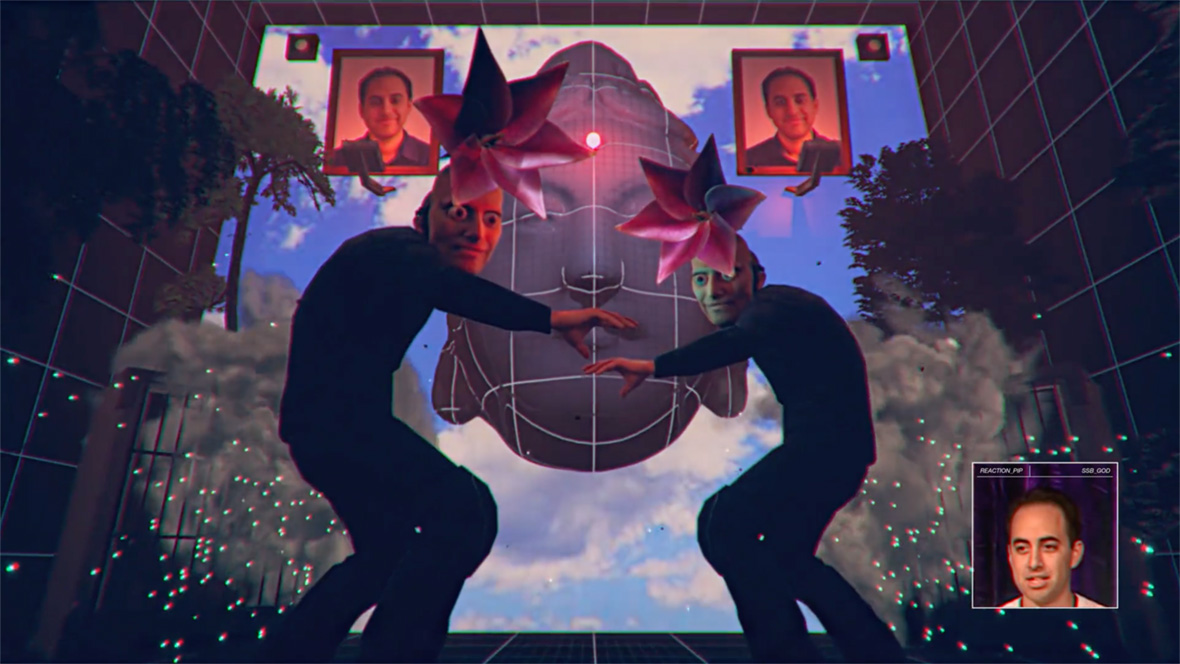
The layers in the video—filmed, virtual, screens within screens—lead the audience question to not only the existence of free will but also the very nature of our reality. This too has deep roots in Daoist texts, specifically in Zhuangzi’s famous dream that he was a butterfly and his subsequent question: is he in fact a butterfly dreaming he’s a man?
The artists insert themselves as characters in their own video, suggesting that the reality we perceive is just one more layer: who’s to say which layer is real? Chen says that these days, the dividing line between the virtual and the real has become less and less clear to him. His work is a reflection of these growing uncertainties. “Yesterday I had a dream,” he says. “At the entrance to the dream I had my hand on a switch—all I had to do was press it and I’d wake up. What do you think: should I press it?”
短片中层层嵌入的不同维度——录像、虚拟、环环相扣的大屏幕,让观众扪心自问自由意志的存在,同时也在向我们所感知的现实世界发出质疑。这种质问深深扎根于道教文化中,特别是著名的理论 “庄周梦蝶”:在梦里,庄子变成了一只蝴蝶,他问道:自己会不会本来就是一只蝴蝶,只是在梦里变成了人类?
两位艺术家在视频中扮演着各自的角色,也侧面显示现实的对立面:视频里和现实中,究竟哪一边是真的?也正因如此,Teom 认为,当下的虚拟和真实之间的分界线对越来越模糊,而他作品也折射出这种日益增长的不确定性。他说:“昨天做了个梦,梦见我在梦的入口拿着一个开关,我只要按下去就能醒来,你说我要按吗?”

Like our stories? Follow us on Facebook and Instagram.
Instagram: @howieleeofficial | @teomchen
Contributor: Kiril Bolotnikov
Chinese Translation: Olivia Li
Hindi Translation: Rewant Prakash


